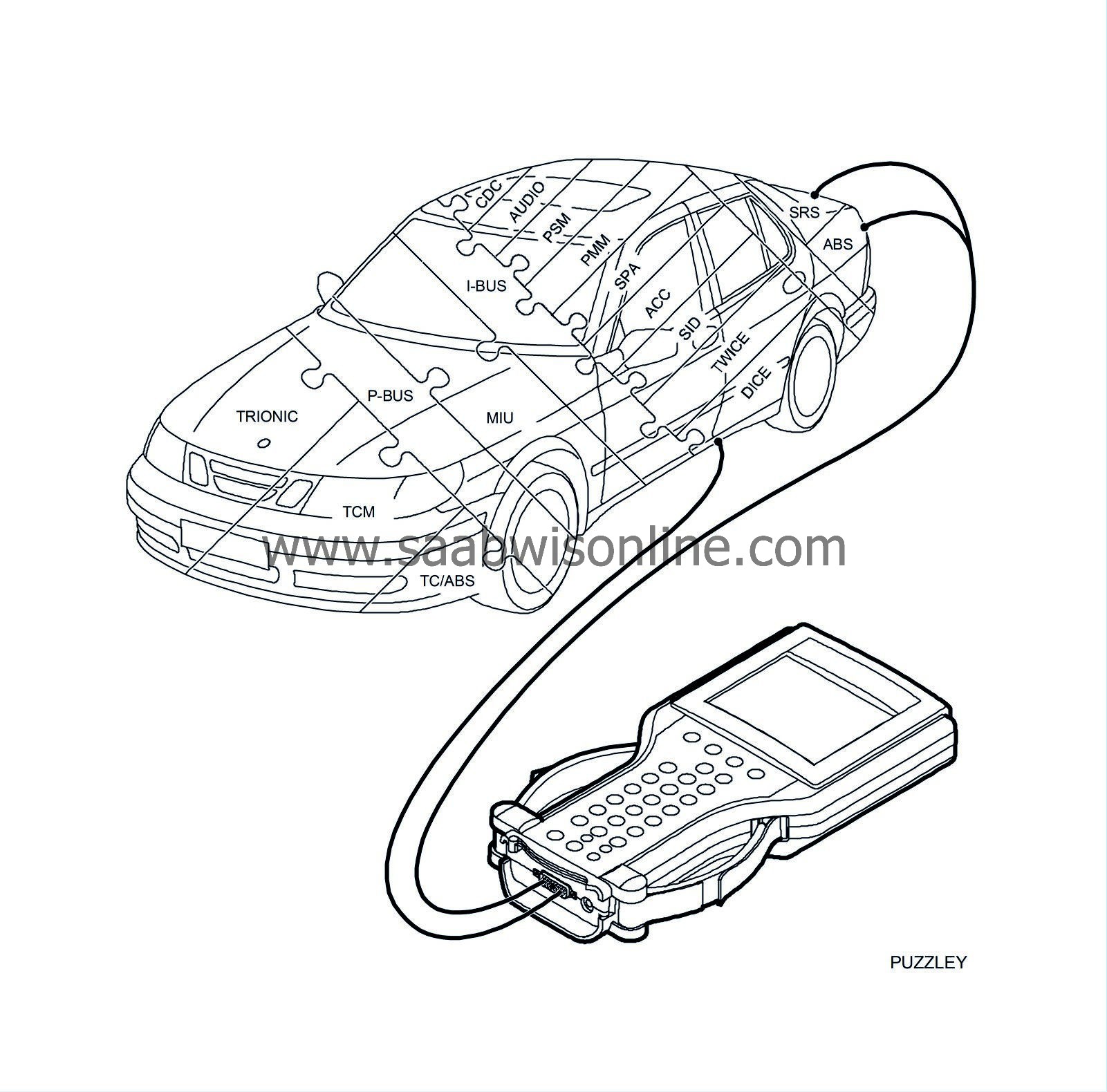System overview, brief description
|
|
System overview, brief description
|
DICE is a comprehensive control system for the electronic functions in the car. The central unit in DICE is a control module which communicates with the system units and with other systems via the car's wiring and the instrument bus (I-bus). DICE has its own diagnostics function and diagnostic trouble codes are set when faults arise.
The following functions are controlled by DICE:
|
•
|
Intermittent wiper, windscreen
|
|
•
|
Intermittent wiper operation, rear window (5D)
|
|
•
|
High-pressure cleaning, headlamps
|
|
•
|
Electrically heated rear window and door mirrors
|
The car's exterior lighting is operated with the headlamp switch and the left-hand toggle switch combined with the DICE control module.
The following light functions in the car's exterior lighting system are controlled by DICE:
General interior lighting (dome lamps) in the car. Automatic or manual function depending on the position of the light switch.
The following light functions in the interior lighting system are controlled by DICE:
|
-
|
Luggage compartment lighting
|
|
Lighting for buttons and controls
|
DICE supplies power to the button and control lighting. The light intensity is controlled by DICE using pulse width modulation (PWM) of the supply voltage to the lamps.
If the Night Panel function of SID has been selected, the bulbs in the button and control lighting will shine with reduced strength.
Acoustic warning if the driver's door is opened while the key is still in the ignition.
Acoustic warning if the parking lights are on and the driver's door is opened while the key is not in the ignition.
The function is programmable.
|
Windscreen and rear window wiping, intermittent
|
When using the intermittent function on the windscreen wipers, the time between the strokes can be varied from 2 to 15 seconds and is adjusted using a potentiometer located on the control lever of the wiper switch.
DICE also controls the wiper function for windscreen and rear window washing (5D). For a short wash, the wiper arms swipe three times. For a longer wash, the wiper strokes increase to a maximum of five strokes. The rear window wiper swipes a few strokes after a slight delay when washing.
The “extra wiper stroke” function after washing” is programmable.
|
High-pressure cleaning, headlamps
|
DICE activates the relay for headlamp washing. The maximum wash time for the headlamps is 150 seconds when washing the windscreen.
|
Electrically heated rear window and door mirrors
|
Electric heating of the rear window and exterior rear-view mirrors. These functions are activated manually or automatically via the car's ACC function, alternatively manually when the car has MCC.
|
Radiator and battery fans
|
DICE controls when the radiator fan is switched on and off. Depending on the market, the car is equipped with either 1 or 2 radiator fans and 1 battery fan. The battery fan starts when the car's radiator fan starts at low speed.
On cars without A/C, one fan. DICE switches the radiator fan on/off.
On cars with A/C, 2 fans. DICE controls whether one or two fans will be used.
DICE uses the following information to control the function:
Control of the A/C function. DICE uses the following values to determine whether the A/C compressor should be allowed to operate:
|
-
|
A/C system working pressure
|
|
-
|
Evaporator temperature (up to VIN 33017341)
|
|
-
|
Time that the engine has been running
|
If DICE gives approval for the A/C compressor to operate, DICE sends a bus message that is used by the engine control system to activate the compressor clutch relay.

All control modules in the Saab 9-5 are connected to the bus with the exception of ABS and SRS. For cars with Traction Control, the TC/ABS control module is connected to the bus.
The bus allows for exchange of a great deal of information between control modules over only two leads. The bus is divided into a Powertrain bus (P-bus) and an Instrument bus (I-bus).
The powertrain systems Trionic, TCM and TC/ABS need quick communication so that no delays are noticeable during engine torque limitation and the like when one is shifting.
Trionic, TCM and TC/ABS are connected to the P-bus, on which data transfer is ten times faster than on the I-bus.
The P-bus and I-bus are connected to MIU. MIU is responsible for making information on one bus available to the other bus.
The diagnostic instrument is not connected directly to the bus but communicates via the DICE, one of the control modules connected to the I-bus, and so has access to all control modules connected to the bus.
Vehicle speed data is important for many control modules. Since ABS is not connected to the bus, the vehicle speed signal is sent on a separate lead from ABS to MIU. MIU then sends the data over the buses. In cars with Traction Control, the TC/ABS sends vehicle speed data to the MIU via the P-bus.



